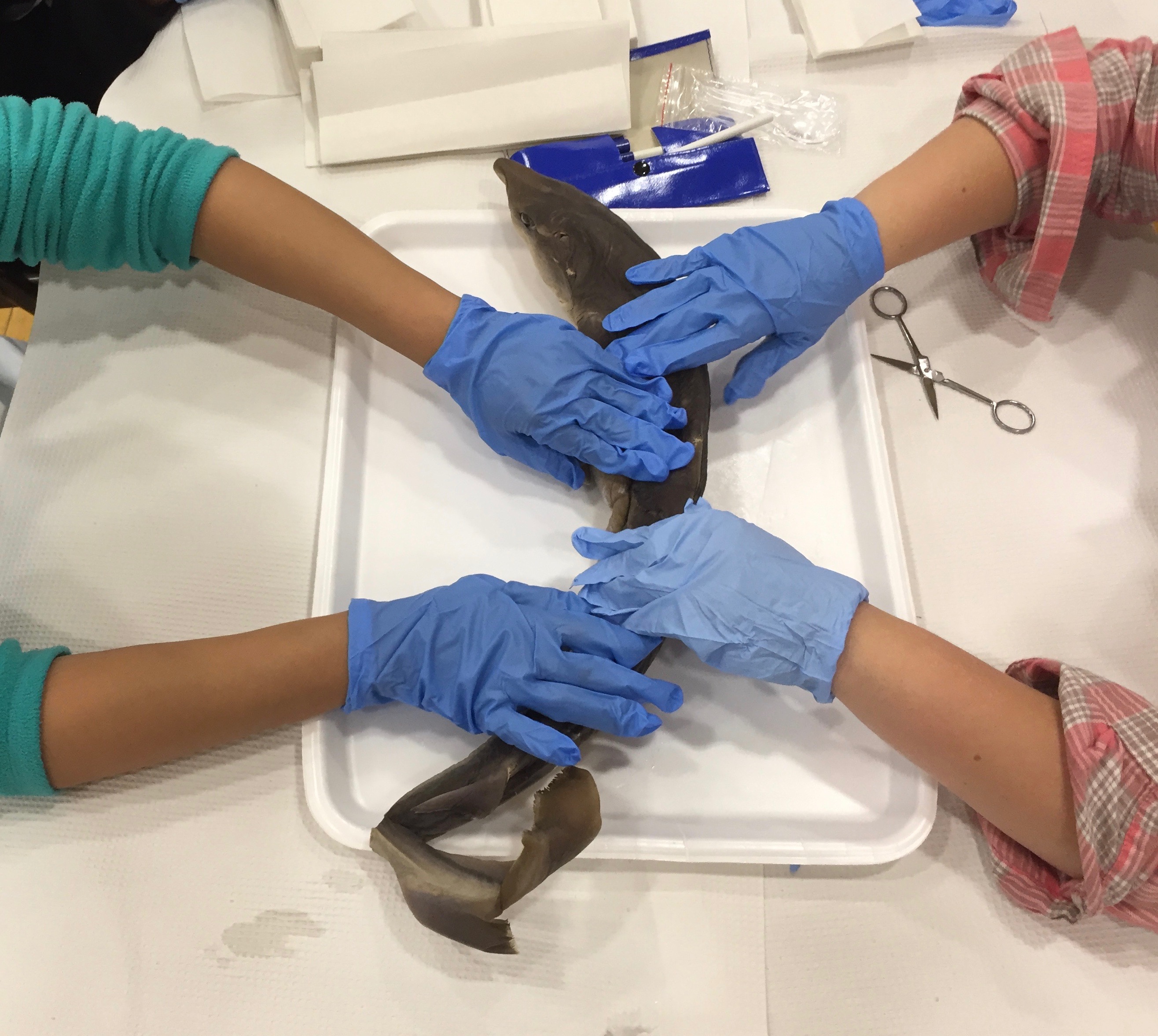
Okay, it wasn’t that gruesome!
But it was the 11th year that Professor Terry Harrison has led a shark dissection at the Colorado Center for the Blind. The idea was, and still is, to give blind youth a chance to get really hands-on with science. In this case, anatomy.
Every year, Professor Harrison arrives about an hour before the class is to begin and lays out the specimens – about a dozen dog sharks or dogfish , all between two and three feet in length. Along with them are scalpels, probes and vinyl gloves. At some point in the morning, we’ll learn that sharks don’t sleep, can’t stop moving water over their gills or they’ll suffocate, and that in the UK and Ireland it’s a fair chance that they are the main ingredient of your fish and chips.
Gulp!
After examining the outer anatomy, like dorsal fins, tail, nose and gills, it’s time to turn the sharks over and make an incision. Inside the body cavity students found the lungs, hart, stomach, liver and sex organs. At least two of the sharks had the undigested remains of their last meal.
This year, as in previous years, middle to high school kids come with a teacher or parent. Historically, blind kids were often told to “observe” in science labs, but not to “look” in the way blind people do best with such matters – by using their hands. That’s changing, thanks to more than a decade of focused effort by the Jernigan Institute of the National Federation of the Blind to create access to STEM learning as a pathway to careers for blind youth, and which spawned programs like this across the country. Lets not forget enlightened parents and teachers who know that their young learners can and should learn the ways they learn best, as well as those young blind science nerds who just want to do it regardless.
This year’s group included about nine kids and a fair sprinkling of our own students as both learners and mentors.
Thanks again to Terry Harrison and to Arapahoe Community College. We look forward to our next shared learning adventure!




